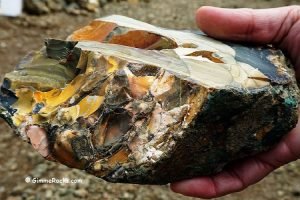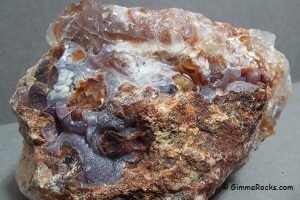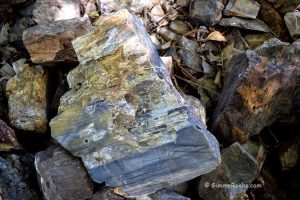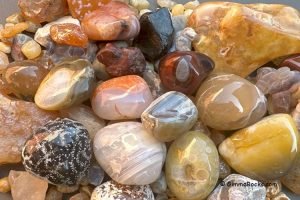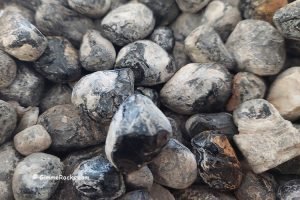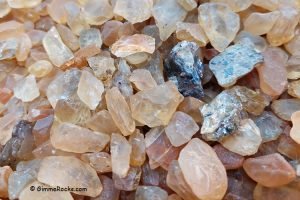The term "Jade" refers to two distinct specimens - nephrite and jadeite. These highly prized minerals share a name and have similar properties. However, their mineral compositions, appearances, and geographical origins differ.
Toughness and durability of both minerals make them ideal materials for carving and crafting. Both jades are popular ornamental stones that are valuable for their historical and cultural significance.
Jadeite Formation and Identification
Formation
Jadeite is a silicate rock formed under specific geological conditions, typically within metamorphic rocks in high-pressure, low-temperature environments. Over time, it undergoes further transformation due to heat, pressure, and water.
As a member of the pyroxene group, jadeite is primarily composed of sodium, aluminum, and silicate, with additional mineral impurities like iron contributing to its color variations. Unlike nephrite, which has a fibrous crystalline structure and a grainier texture, jadeite's texture is often described as silky and granular.
Jadeite boasts a wide range of colors including blue, green, white, red, orange, and black.
The most prized variety is a vibrant and intense green, often called "imperial jade." Its texture is frequently described as a silky granular mineral. When polished, it has a smooth and glassy appearance.
Identification
Ornamental nephrite and jadeite typically occurs in massive forms or as granular aggregates, making them visually difficult to distinguish from one another. In fact, until the 19th century, they were considered the same mineral.
Differentiating between nephrite and jadeite often requires specialized tests, such as petrographic analysis, geochemical methods, or X-ray diffraction.
However, a practical home-based approach to distinguishing the two is by measuring their specific gravity. Additionally, the specimen's color and massive structure make identification easier.
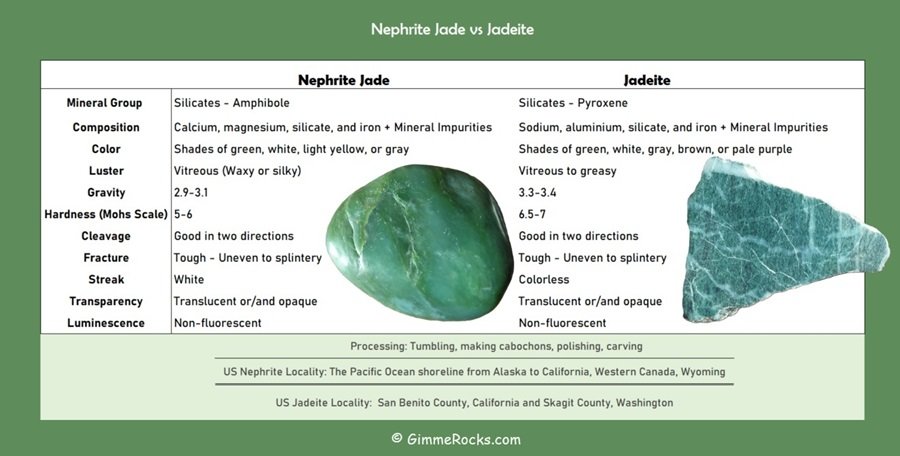
Value of Raw Jadeite
Jadeite is typically more expensive than nephrite. The price of raw jadeite depends on several factors, such as size, color, quality, and origin. Deep green colors, like imperial green, are especially prized.
Processing Tips
Jadeite is popular for its exceptional qualities as a carving material, making it ideal for sculptures, ornamental objects, beads, and cabochons. It is easily tumbled and polished.
Cultural and Historical Significance
Jadeite has been highly valued for centuries, holding deep cultural and spiritual significance in various regions worldwide. The appreciation for jadeite extends beyond its physical properties, encompassing cultural traditions, symbolism, and the skilled craftsmanship involved in creating jade artifacts, jewelry, and sculptures.
Ancient China
Both jadeite and nephrite have a long history in China, dating back to the New Stone Age (between 10,000 BC and 2,200 BC). Those minerals were highly prized for their beauty and perceived spiritual properties.
In Chinese culture, jadeite was associated with virtues such as purity, morality, and immortality. It was often placed with the deceased to ensure their safe transition to the afterlife.
Mesoamerica
Jadeite was significant cultural and religiously important in Mesoamerican cultural traditions. It was more valuable than gold. The Zapotec, Maya, Olmec, and Aztec civilizations used it to create jewelry, carvings, and ceremonial objects.
Jadeite was considered a symbol of power, fertility, and the cycle of life and death. The Maya, in particular, crafted elaborate jadeite masks and jewelry for their rulers and elite.
Burma (Myanmar)
Burma (now Myanmar) has been a historically significant source of high-quality jadeite. The gemstone has been mined in the region for centuries, and Burmese jadeite, particularly the rare and prized imperial green variety, is highly sought after in the global market. The mining and trade of jadeite have played crucial roles in Burma's economic and political history.
The mining and trade of jadeite have played significant roles in Burma's economic and political history.
Imperial China
During the Qing Dynasty (1644–1912), jadeite gained popularity among the imperial family and the elite. The emperor's court adorned themselves with jadeite jewelry, and intricate carvings became treasured items in the imperial collection.
The high demand for jadeite during this period led to the establishment of trade routes between China and Burma, from which the finest jadeite was sourced.
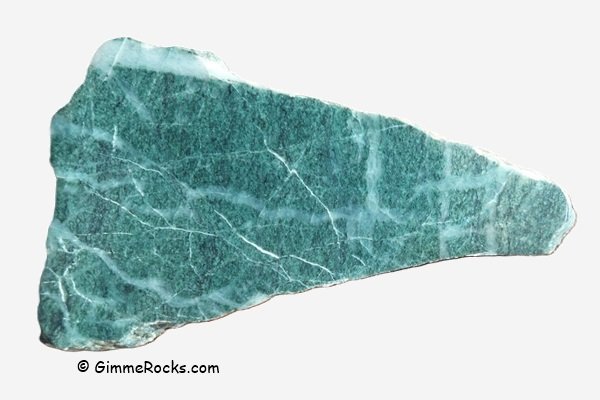 Jadeite from Clear Creek California.
Jadeite from Clear Creek California.
It features a unique color of blue-green mixed with white streaks.
Jadeite Occurrences
Jadeite, a rare and valuable variety of greenstone, occurs naturally in only a few locations around the world. According to the article in European Journal of Mineralogy, there are 18 locales where jadeite can be found.
Significant deposits are located in Guatemala, Cuba, the Dominican Republic, Japan, Papua New Guinea, Italy, Iran, Greece, Myanmar, Russia, Kazakhstan, and parts of Western America.
You May Also Like
European Journal of Mineralogy 24(2):371-390. March 2012. Tatsuki Tsujimori and George E. Harlow

